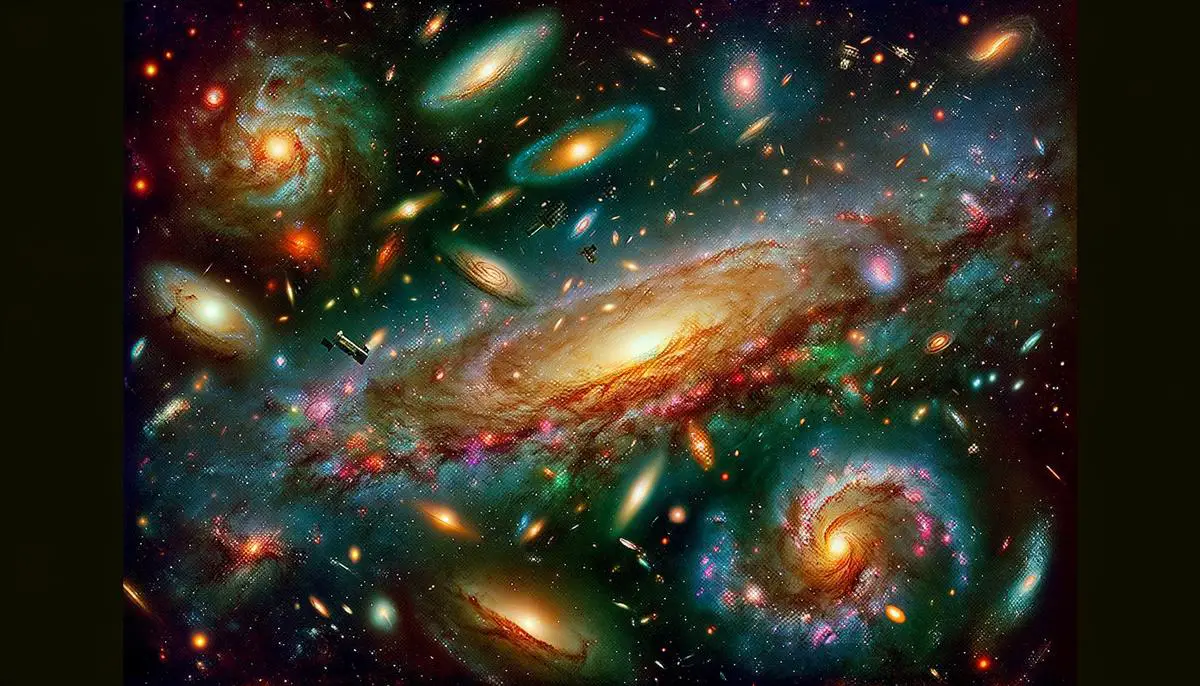Mission and Objectives
The James Webb Space Telescope (JWST) has embarked on an extraordinary mission to explore some of the universe's most pivotal questions. It aims to peer back over 13 billion years to observe the first stars and galaxies that formed after the Big Bang. This helps us understand how the raw materials of our universe came together to form everything we see today.
JWST is also scrutinizing the assembly process of galaxies. By examining old galaxies, it provides clues on galaxy formation and evolution, shedding light on why we see spirals, ellipticals, and other shapes we classify today.
The birth of stars and protoplanetary systems is another focal point. JWST's infrared capabilities allow it to penetrate dusty clouds, revealing stellar nurseries. This not only illuminates how stars form but also how their resulting solar systems start to take shape, possibly giving rise to planets like our own.
Searching for planets and origins of life is another intriguing aspect of JWST's mission. It analyzes the atmospheres of exoplanets, trying to find signs of habitability or even life. From examining gases that might indicate biological activity to scrutinizing the chemistry of these alien atmospheres, JWST is on a quest to answer one of humanity's oldest questions: Are we alone?
By studying the earliest light, the formation of galaxies, the birth of stars, and the potential for life on distant planets, JWST is unveiling the secrets of the universe piece by piece. As each objective unfolds, our understanding of the cosmos and our place within it grows immeasurably.
Launch and Deployment
The launch of JWST on December 25, 2021, from Europe's Spaceport in French Guiana, marked a historic moment in space exploration. The Ariane 5 rocket, known for its reliability, carried the telescope into space.
After a successful launch, the JWST embarked on a 30-day journey to Lagrange Point 2 (L2), a gravitational sweet spot approximately 1.5 million kilometers from Earth. During this time, each stage of the journey was carefully monitored.
One critical phase of JWST's deployment was the unfolding of its complex sunshield. The sunshield, essential for keeping JWST's instruments at the necessary cold temperatures, unfolded successfully and was tensioned into place. Each of its five distinct layers serves to protect the telescope from the Sun's intense heat.
Following the sunshield deployment, the mirrors were unfolded. JWST's 6.5-meter primary mirror, composed of 18 hexagonal segments, had to unfold perfectly, align precisely, and act in unison to create a seamless surface for capturing light from distant stars and galaxies.
The alignment phase involved aligning each mirror segment to within nanometers. Over weeks, engineers sent commands, watched data, and adjusted mirror segments with great precision. Each small movement brought the mirror closer to its perfect curvature, readying it for capturing the faintest whispers of light from the farthest reaches of space.
Once fully deployed and aligned, the telescope underwent rigorous tests to ensure all systems were operational. These tests confirmed that JWST could capture sharp, well-focused images with all of its scientific instruments.
Now settled in its orbit at L2, the JWST stands ready to unlock the secrets of the cosmos, poised to provide unprecedented insights into the universe's grandest mysteries.
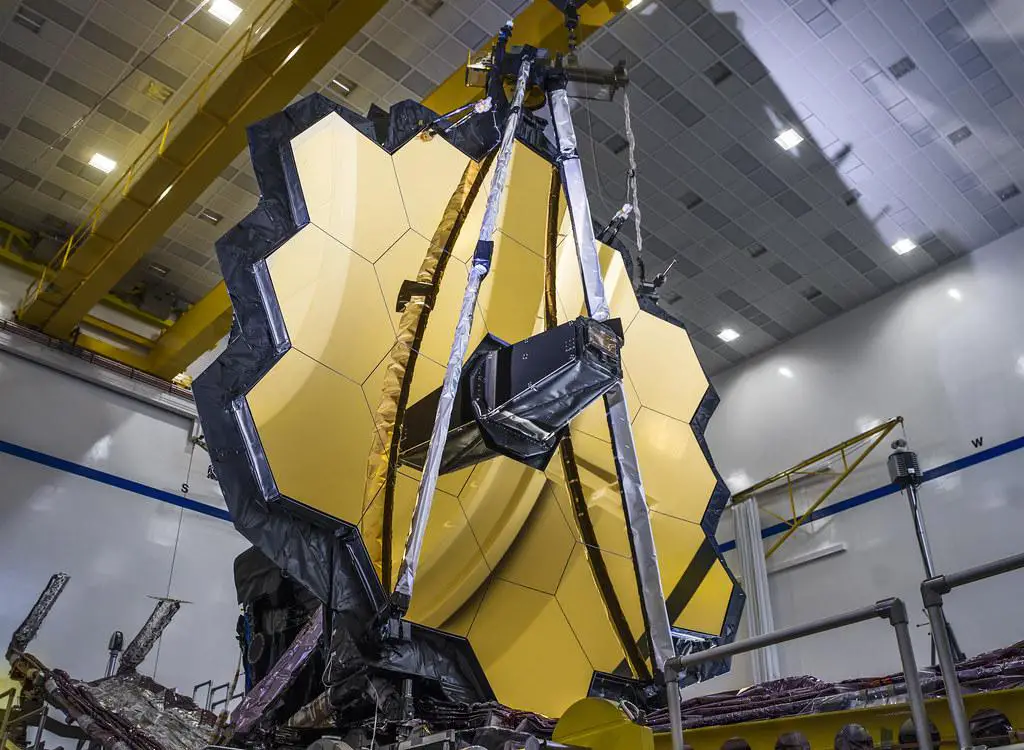
Technological Innovations
The James Webb Space Telescope (JWST) embodies remarkable technological innovation. Its 6.5-meter primary mirror, composed of 18 carefully engineered segments made from beryllium and coated with a thin layer of gold, functions collectively to capture faint light from the far depths of the cosmos. The capability to individually adjust these segments enhances the telescope's ability to focus, offering unprecedented clarity.
The innovative sunshield is another crucial component for JWST's operations. It consists of five ultra-thin layers made from Kapton, each layer about as thin as a human hair. This array serves as a thermal barrier, ensuring that the telescope remains cool enough to detect faint signals from the farthest corners of the universe.
JWST's four scientific instruments fulfill unique roles in analyzing and capturing data from the cosmos:
- The Near-Infrared Camera (NIRCam)
- Near-Infrared Spectrograph (NIRSpec)
- Mid-Infrared Instrument (MIRI)
- Fine Guidance Sensor/Near InfraRed Imager and Slitless Spectrograph (FGS/NIRISS)
Compared to its predecessor, the Hubble Space Telescope, JWST's ability to observe in the infrared spectrum using advanced sensors and larger mirrors allows it to peer through cosmic dust and uncover aspects of the universe Hubble could only hint at. The shift to infrared is essential because many of the universe's earliest, most distant objects emit light in this spectrum, stretched by the expansion of the universe over billions of years.
JWST orbits the Sun at the second Lagrange point (L2), roughly 1.5 million kilometers from Earth.1 This location provides a stable gravitational environment and a consistent view of the cosmos, unencumbered by Earth's shadow or thermal complications associated with a low-Earth orbit.
In every facet, from its mirrors to its unique orbit, JWST represents a quantum leap in space telescope technology. It embodies the intersection of human curiosity and technological ingenuity, demonstrating what's possible when we dare to dream big and aim far. As we explore deeper into the mysteries of our universe, this technological masterpiece will undoubtedly become our most valuable tool, opening new windows into the farthest reaches of space and time.
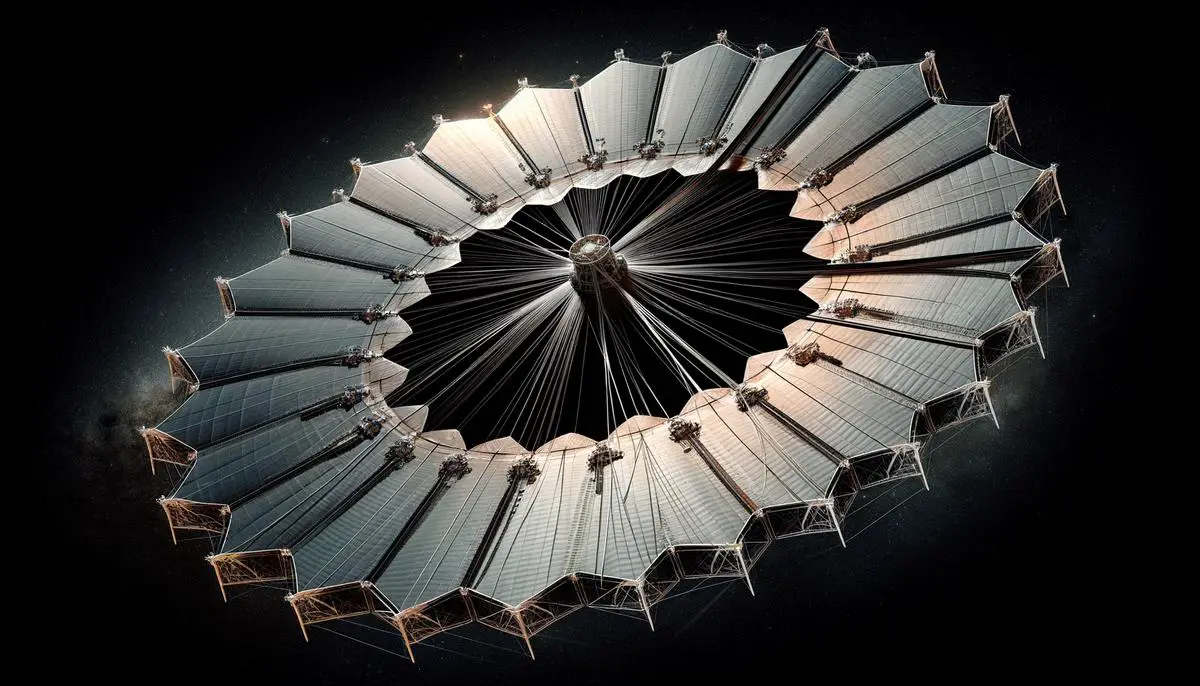
Scientific Discoveries
The James Webb Space Telescope (JWST) has made remarkable discoveries, shedding light on previously unseen corners of the universe. One of its most significant achievements is the observation of the earliest galaxies, peering back to just 400 million years after the Big Bang. JWST captured images of these primordial galaxies, such as those revealed in the GLASS-MS30 survey, which appear as faint red smudges in exquisite detail. These galaxies provide invaluable insight into the infancy of the universe, showing how stars began clustering into protogalactic formations and influencing cosmic evolution.
JWST's observations go beyond visual sightings; it also examines the chemical composition within these ancient galaxies. The telescope's powerful infrared capabilities allowed it to analyze the absorption lines imprinted by hydrogen, unveiling dense reservoirs of primordial gas feeding these early galaxies. Such analyses deepen our understanding of how galaxies grow, evolve, and eventually transform into the complex structures seen today.
Another groundbreaking facet of JWST's mission is its detailed study of exoplanet atmospheres, such as those of WASP-107 b. This exoplanet, located about 200 light-years from Earth, was found to have an atmosphere with an unusually low level of methane. The telescope's analysis indicated that despite its resemblance to Jupiter in size, WASP-107 b is far less dense, with a fluffy, almost marshmallow-like structure.1 This discovery shifted our understanding of planetary formation, suggesting that such "super-puff" planets can form through more conventional processes than previously thought.
JWST's capability to detect specific molecules, like carbon dioxide and methane, even hinted at the possible presence of dimethyl sulfide (DMS) on exoplanets like K2-18 b—a molecule potentially indicative of life. Though initial excitement about this potential biosignature was tempered by further analysis, it underscored JWST's profound ability to probe environments far beyond our solar system and set the stage for future detailed observations of other candidate planets.
The telescope has also given us extraordinary views of star formation. JWST's images of the "Cosmic Cliffs" in the Carina Nebula, a stunning star-birthing region more than 7,500 light-years away, reveal a colossal wall of gas and dust, studded with young, hot stars in the process of formation. Its infrared vision can peer through the thick dust clouds, showing us young stars emerging from their cocoons, illuminating their environments with powerful stellar winds and radiation.
Similarly, JWST's observation of dwarf galaxies forming within dense clouds of gas provided compelling evidence of how such galaxies contributed to the reionization of the universe. This phase, occurring about a billion years after the Big Bang, marks when the universe transitioned from darkness to light as emerging galaxies and stars ionized the surrounding gas.
JWST's survey on the evolution of galaxies has uncovered evidence of black holes influencing galactic structures. By observing the mid-infrared wavelengths, it's helping astronomers dissect the role supermassive black holes play in moderating star formation, offering clues about their interactions with the galaxies that host them.
The James Webb Space Telescope, through its unprecedented capabilities, is revolutionizing our understanding of the universe. Its observations allow us to look back in time, study the formation and evolution of galaxies, understand star birth, and investigate the atmospheres of distant exoplanets with unmatched detail. By doing so, JWST helps us piece together the cosmic puzzle, offering profound insights and expanding our knowledge of the vast universe we inhabit. As new data continue to flow in, we can anticipate further breakthroughs and answers that lie ahead.
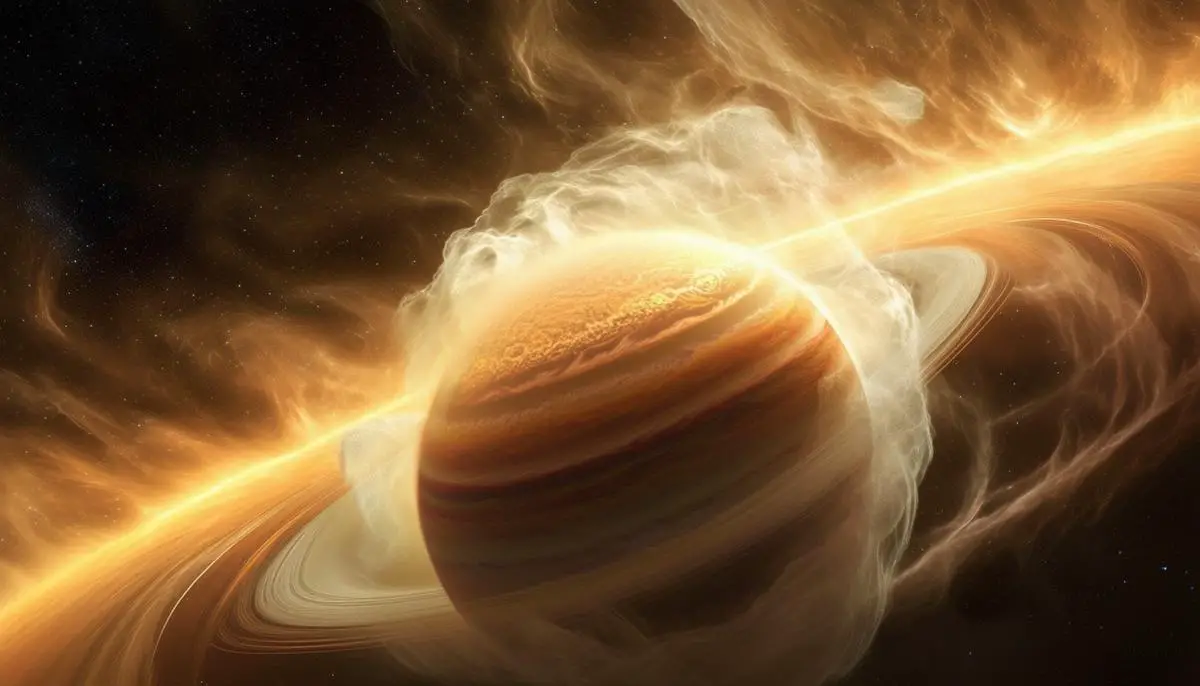
Challenges and Delays
The journey of bringing the James Webb Space Telescope (JWST) from concept to launch was far from smooth. The telescope's development was a true test of engineering prowess, resilience, and international collaboration, punctuated by numerous challenges and delays.
One of the initial setbacks arose from the sheer intricacy of the engineering involved. Designing and constructing a telescope capable of folding into a rocket, then unfolding and operating flawlessly in the harsh environment of space, required innovative solutions and unprecedented precision. This intricacy bred a cascade of technical issues, including:
- The intricate development of the mirrors
- The revolutionary sunshield
- Recurring hurdles in perfecting the cryocoolers needed to keep the instruments at operational temperatures
These engineering challenges extended the original projected launch dates multiple times. JWST was initially slated for launch in 2007, but issues with the design and development of its key components led to delays. Each delay necessitated more funding and extended the project's timeline, straining the patience and resources of space agencies and their partners.
Adding to the technical difficulties, political challenges loomed large. In July 2011, amid budget discussions in the United States, there was a real threat to the future of JWST. Congress was on the verge of pulling funding for the project, an event that could have been catastrophic for its continuation. The space science community rallied, advocating for the telescope's importance and potential to revolutionize our understanding of the cosmos. Their efforts weren't in vain—by November 2011, the funding was secured, but the episode underscored the vulnerability of large-scale scientific projects to political winds.
The global COVID-19 pandemic further complicated matters. As the pandemic spread in 2020, it introduced unprecedented disruptions to the JWST development timeline. Lockdowns and social distancing measures slowed progress in various facilities involved in the project across the globe. Supply chains were disrupted, and critical work on the telescope was delayed as engineers, scientists, and technicians faced restrictions on travel and in-person collaboration. NASA and its partners had to adapt rapidly, implementing safety protocols and adjusting timelines to accommodate the changing circumstances.
Despite these setbacks, the spirit of collaboration and resilience of the JWST team shone through. Engineering problems were systematically tackled. The development of the mirror segments progressed with careful attention, ensuring that each piece met the stringent requirements necessary for their performance in space. Similarly, the challenges associated with the sunshield were addressed with innovative solutions and rigorous testing.
The political support was regained through concerted advocacy efforts, highlighting JWST's potential to answer some of humanity's most profound questions. This support helped secure the necessary funding and political will to push the project forward. The COVID-19 pandemic, though disruptive, spurred new ways of working and problem-solving, showcasing the adaptability of the teams involved.
Finally, after overcoming these myriad challenges, the JWST was ready. The culmination of years of perseverance, collaboration, and innovation was realized with its successful launch on December 25, 2021. Once in space, the deployment and unfolding of the telescope's components carried out flawlessly, a testament to the careful planning and hard work that had gone into overcoming every obstacle.
The odyssey of JWST's development and launch is a narrative of human ingenuity and determination. It's a reminder that great achievements often require overcoming significant hurdles, and the greatest discoveries frequently come after the most formidable challenges.
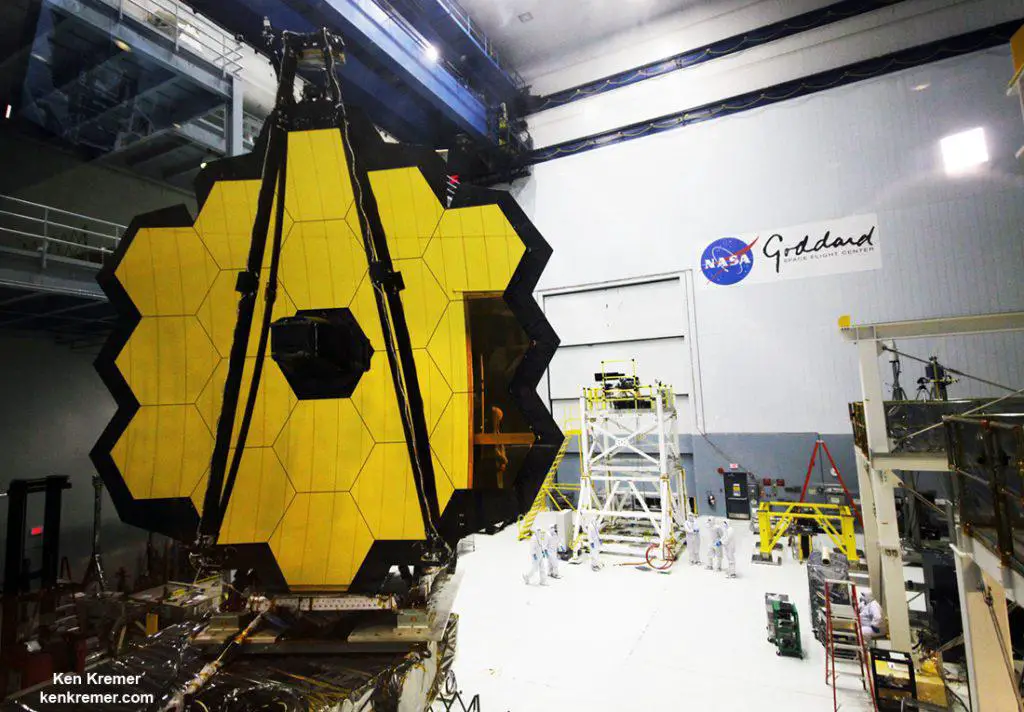
Future Prospects
With the James Webb Space Telescope (JWST) now operational, the horizon brims with exciting possibilities and promising future prospects. JWST is set to continue its groundbreaking work, venturing into new areas of astronomical research and discovery, complementing other vital telescopes and reaffirming its role as a beacon of cosmic exploration.
One of the most thrilling aspects of JWST's future involves its ongoing and planned missions. In the coming years, JWST will be pivotal in studying the assembly history of galaxies, examining the distant universe's most ancient and faintest galaxies. By providing a clearer view of these early structures, JWST will enhance our understanding of the formation and evolution of galaxies, thus piecing together the intricate cosmic puzzle.
Additionally, JWST is poised to make substantial contributions to the study of exoplanets, with missions designed to explore the atmospheres of these distant worlds in unparalleled detail. The telescope's sophisticated instruments will probe the atmospheric compositions of a wide range of exoplanets, from hot Jupiters to potentially habitable super-Earths, seeking signs of water vapor, carbon-based molecules, and other critical components that might hint at the presence of life.
In tandem with its focus on the fundamental building blocks of life, JWST's investigations into the birth of stars and planetary systems will forge ahead. Its unique ability to observe infrared light allows it to peer through dense cosmic dust, shedding light on the processes that govern star formation and the early stages of planetary development. Such studies will provide insight into the mechanics of stellar nurseries and the factors that lead to the creation of planetary systems, including potentially habitable environments.
As JWST continues its epic journey, it will also collaborate and build on the legacy of its renowned predecessor, the Hubble Space Telescope. While Hubble remains operational and continues to deliver invaluable optical and ultraviolet data, JWST's infrared capabilities will offer complementary insights. The two telescopes, working in concert, promise a fuller, more comprehensive understanding of celestial phenomena.
JWST's role will expand into new territory with the advent of next-generation space telescopes. Future projects, such as ESA's Euclid mission focused on dark energy and the Nancy Grace Roman Space Telescope aiming to investigate dark matter and exoplanetary phenomena, will benefit from JWST's seasoned presence.2,3 By acting as a trailblazer, JWST sets a high standard of innovation and capability, paving the way for these forthcoming observatories to extend and deepen our exploration of the universe.
The JWST's operational timeline, supported by its ample fuel reserves, suggests it will continue to be a cornerstone of space studies for many more years, potentially well beyond its initial projected lifespan. This longevity opens the door to long-term studies and continuous monitoring of dynamic cosmic events, from the lifecycle of stars and black holes to the evolving atmospheres of exoplanets.
Looking ahead, the research community is abuzz with proposals and plans for innovative observational campaigns leveraging JWST's unparalleled capabilities. From deep field surveys that map the most distant reaches of the universe to specialized studies targeting specific celestial bodies, the telescope's schedule is primed with projects that promise to push the frontiers of astronomical science. The international collaboration integral to JWST's existence will persist, ensuring a diverse array of scientific inquiries and discoveries.
The future of the JWST is as promising as the distant stars it seeks to understand. Its role in advancing our comprehension of the universe, complementing existing and upcoming telescopes, and fostering international scientific collaboration underscores its monumental significance. As JWST continues to unravel the mysteries of the cosmos, each new discovery will build on its legacy, driving forward humankind's perennial quest to explore the profound depths of space and time.
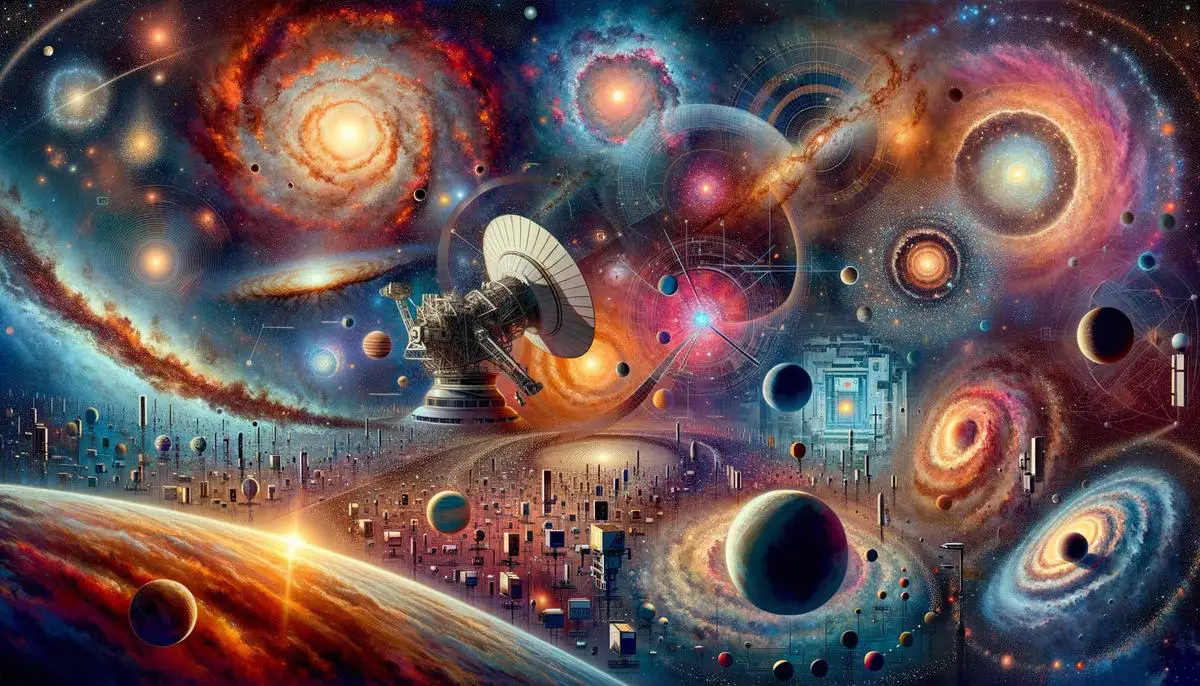
As JWST continues its mission, it stands poised to transform our understanding of the cosmos. By studying the earliest galaxies, probing exoplanet atmospheres, and observing star formation, JWST will contribute invaluable knowledge to the field of astronomy. This telescope is not just a tool for scientific inquiry; it is a testament to human ingenuity and perseverance, promising to expand our comprehension of the universe for years to come.
![]()
